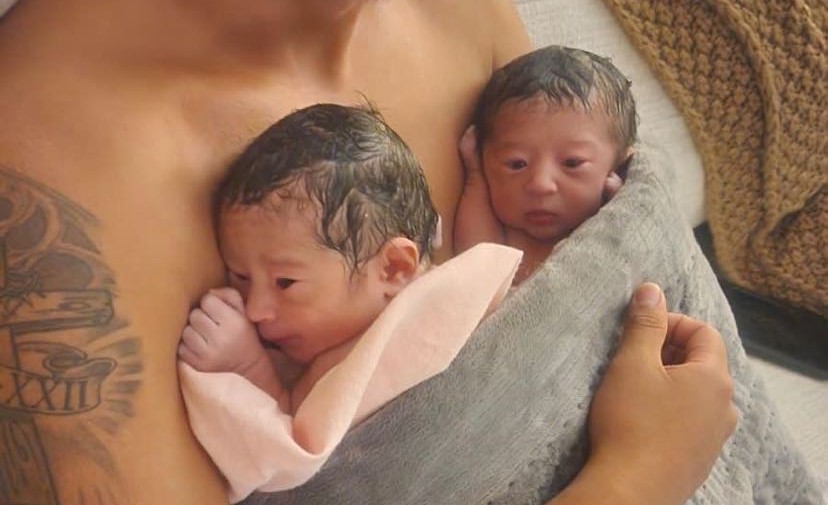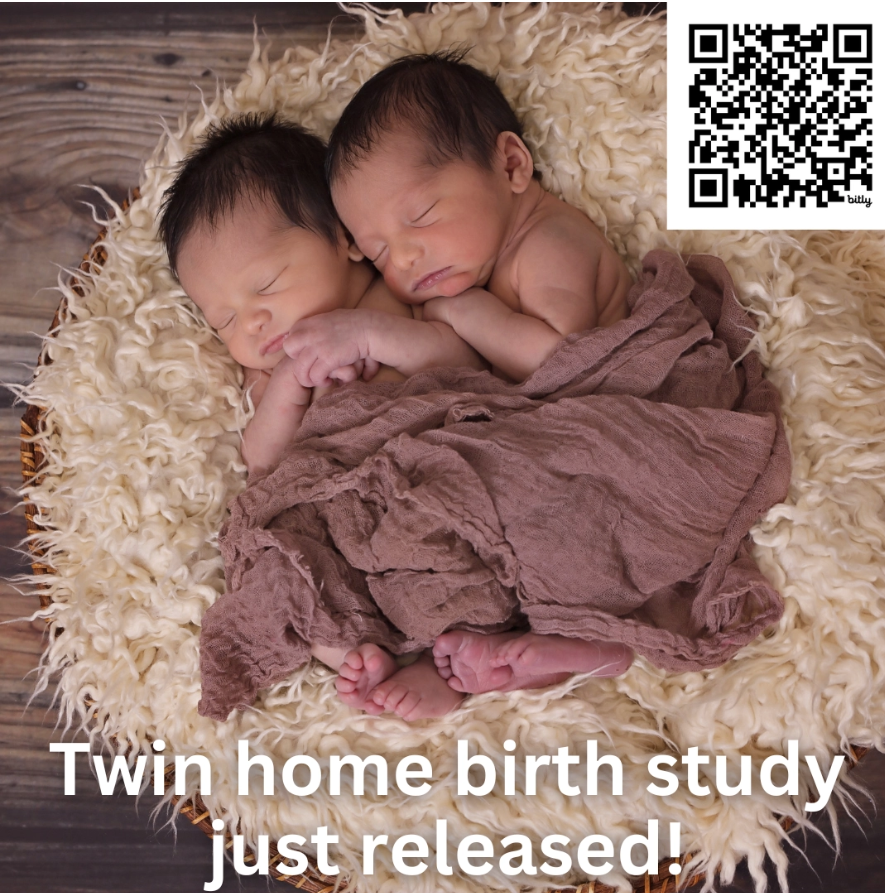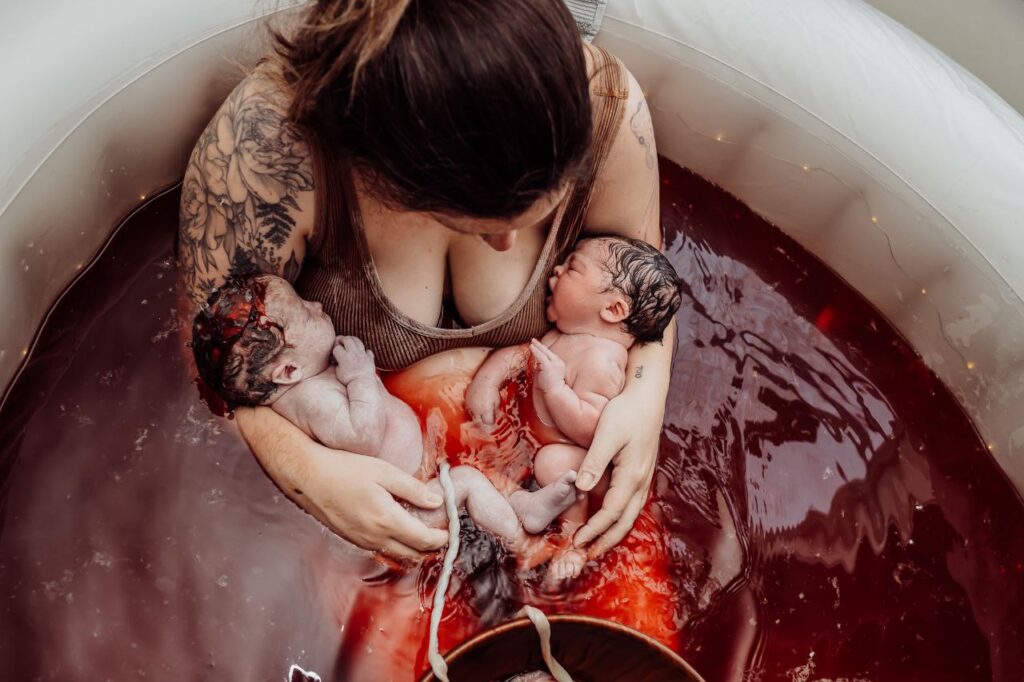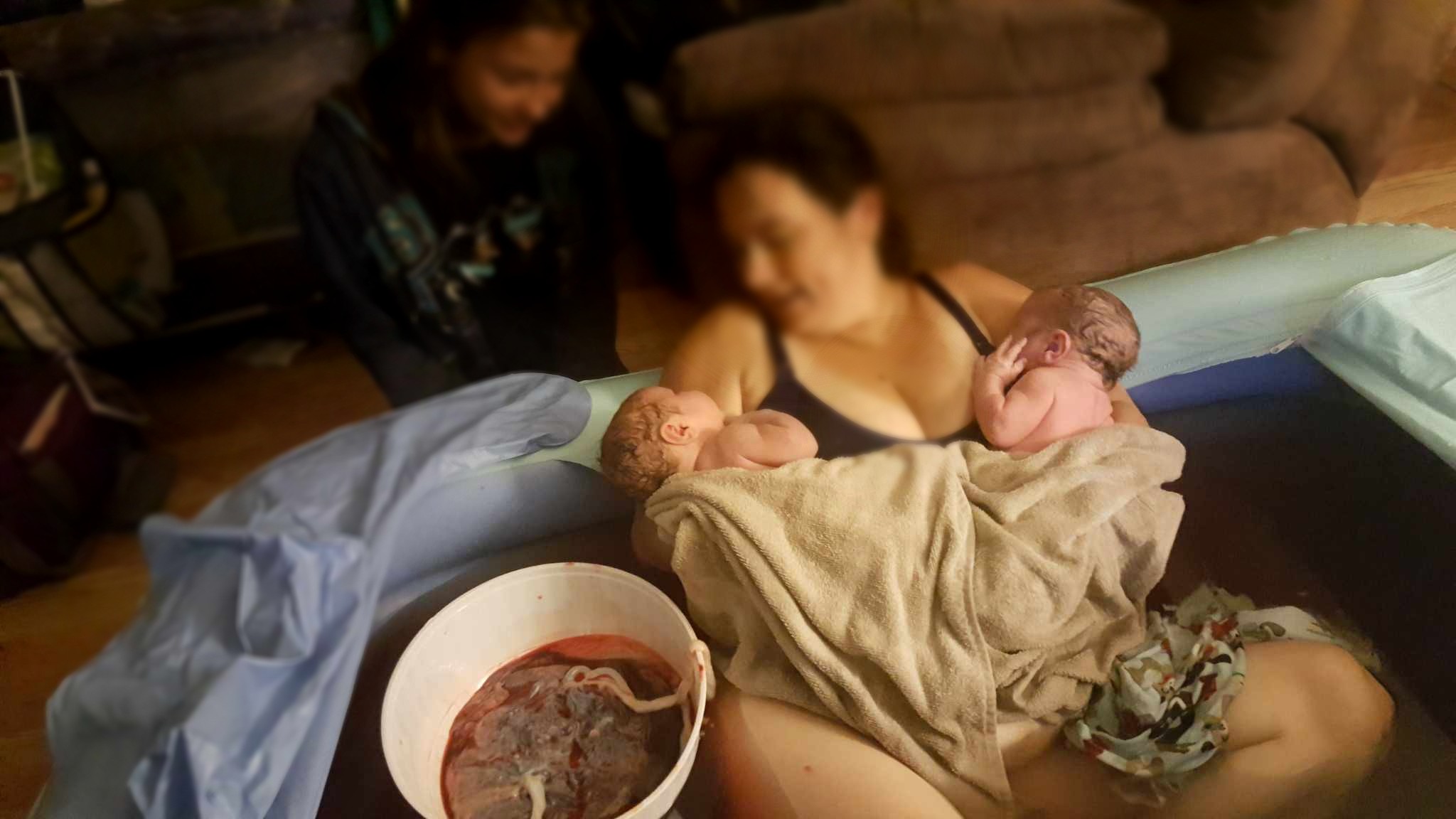
Twin Homebirth
“Twin birth, at it’s heart, is not much different than a single birth – first one baby comes, then the other.
With trust, preparation, and skilled care, the physiological process unfolds naturally, one beautiful step at a time.”
– Khadijah Cisse, Midwife

In 2024, co-authored by Dr. Stuart Fischbein & Dr. Rixa Freeze, this study followed 100 sets of twins attended at home by an obstetrician, the first publication looking exclusively at twin home birth. Overall, 91.3% of women gave birth vaginally, compared to a national average of 25.2% for twin pregnancies.
To read the study: bit.ly/twinhomebirth
If you would like more information about this publication, please call 805-455-8618 or email admin@birthinginstincts.com. For more information about the authors and their organizations, please visit Birthing Instincts (https://www.birthinginstincts.com) and Breech Without Borders (https://www.breechwithoutborders.org).
Q: Is it safe to have twins at home?
A: Yes, twins can be safely born at home under the right circumstances. With the support of a skilled and experienced midwife or obstetrician, twin pregnancies can be managed safely at home if there are no complications and the pregnancy is progressing normally. However, careful screening, close monitoring, and thorough planning are essential. The health of both babies and the mother, as well as access to emergency medical care, are key factors in ensuring a safe home birth.
Q: What makes a twin birth at home safe?
A: Several factors contribute to the safety of a twin birth at home:
- Experienced Birth Team: You should have a midwife or birth team experienced in managing twin pregnancies and deliveries, including handling breech or other uncommon presentations.
- Low-Risk Pregnancy: The pregnancy should, of course, be free of complications like preeclampsia, gestational diabetes, or fetal growth restrictions. Both babies should be healthy, and any risks should be thoroughly assessed.
- Proper Screening: Regular ultrasounds, monitoring of fetal heart tones, and checks for any abnormalities are crucial to ensure both babies are in a safe position for birth.
- Clear Backup Plan: A detailed plan for transfer to a hospital in case of complications is necessary. Twin births at home should only be attempted when you have access to nearby medical care if needed.
- Mother’s Health: The mother should be in good health, with a normal-sized pelvis and no contraindications to vaginal birth.
Q: How do breech presentations affect twin home births?
A: It’s common for at least one twin to be in a breech position, as 50% of the time, at least one of the twins will present breech. This is not necessarily a reason to avoid a home birth, as breech twin births can be safely managed at home under the care of a skilled midwife. However, the following conditions must be met:
- Skilled Practitioner: Your midwife must be experienced in delivering breech twins. Vaginal breech delivery of twins requires skill and preparation.
- First Twin Head-Down: The first twin should ideally be in a head-down position, as this presents fewer challenges during labor. At times, both babies may present breech and this scenario may be considered based on the mother’s individual factors and prior birthing history.
- Monitoring and Planning: As with all homebirths attended by a midwife, close monitoring is necessary to assess fetal heart tones, ensure the second twin remains in a safe position, and prepare for the possibility of a hospital transfer if complications arise.
Q: What are the key considerations for twin births at home?
A: The following considerations are important for a twin birth at home:
- Positioning of the Babies: The first twin should ideally be head-down. If the second twin is breech or in another unusual position, your midwife must have the skills to manage this.
- Gestational Age: Twin births at home are typically safest after 37 weeks of pregnancy, when the babies are more likely to be fully developed.
- Spontaneous Labor: A home birth is safer when labor begins spontaneously, as medical interventions may be necessary if labor is induced.
- No Major Complications: Both babies should be healthy, and there should be no significant medical concerns for the mother, such as high blood pressure, gestational diabetes, or placental issues. Mono/di twins should be carefully monitored for potential development of Twin-to-Twin Transfusion Syndrome (TTTS) and mono/mono twins are not good candidates for home delivery due to the substantially higher risks for these babies that share a single amniotic sac.
Q: What if one or both twins are breech?
A: Breech presentations are common in twin pregnancies (as often as 50% of the time), especially with the second twin. If one or both twins are breech, it’s essential to have a birth team that is experienced in breech delivery. The position of the first twin is especially important; if the first twin is head-down, the second twin can sometimes be delivered breech without issue. If the second twin is breech, your midwife will need to be prepared to manage the delivery, either by assisting with the breech birth or by facilitating a transfer to a hospital for a more complex delivery.
Q: Can I still have a vaginal twin birth at home if one baby is breech?
A: Yes, a vaginal twin birth at home can be an option if one baby is breech, but only if certain conditions are met. The requirements will vary based on the experience or potentially the licensing of the provider. An experienced midwife may assist with delivering the breech twin or may recommend repositioning techniques, depending on the situation. If complications arise, such as fetal distress or the second twin not being delivered smoothly, you may need to transfer to a hospital.
Q: What are the risks of a twin home birth?
A: The risks associated with twin home births are similar to those of any homebirth but with additional considerations due to the nature of twin pregnancies. Aside from the risk of prematurity, and the potential for Twin-to-Twin Transfusion Syndrome (TTTS) with mono/di (or mono/mono twins who should not birth at home), there is also a higher risk of bleeding to the mother. In homebirth, midwives come equipped to manage most scenarios of excessive bleeding, but distance to the hospital should be considered. As with any vaginal delivery, there are occassion, but very rare instances, where excessive bleeding can not be as easily controlled. Mothers with a healthy medical history are not immune from these rare circumstances, but are still generally good candidates to birth at home, according to a recent study (linked above).
Q: Can I have a freebirth with twins?
A: It is always a mother’s God-given right to birth free. There are some scenarios I woud not recommend, but it is always a mother’s right to make that decision free from judgement. All around the world there are still women that do birth twins alone or with support from only family and friends. I do personally have three friends that birthed twins alone and one friend who birth triplets, intentially unassisted, all with good outcomes. Some of those babies were also born breech, as is often the case. I also have supported many mothers virtually worldwide as they birthed twins or breech babies alone successfully. It was their risk to take, regardless of any perceived of statistical risk. It is my belief and experience that mothers birthing intentionally unassisted or at home with a provider always have the best interest of their baby/babies in mind, though the cultural mindset is not always behind them unfortunately.

“The most important thing a woman needs during labor is not a set of medical tools and interventions, but the presence of someone who believes in her.”
– Khadijah Cisse, Midwife

